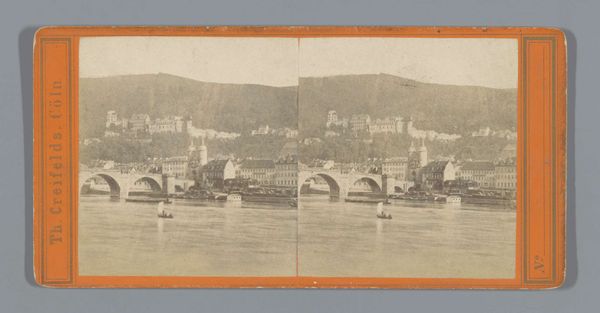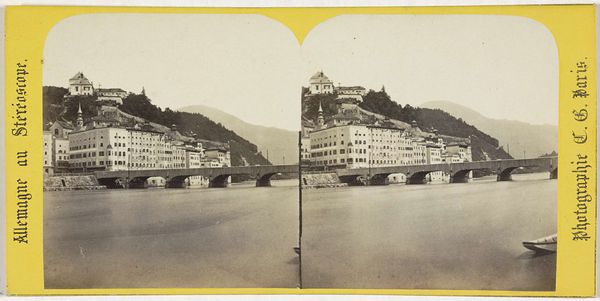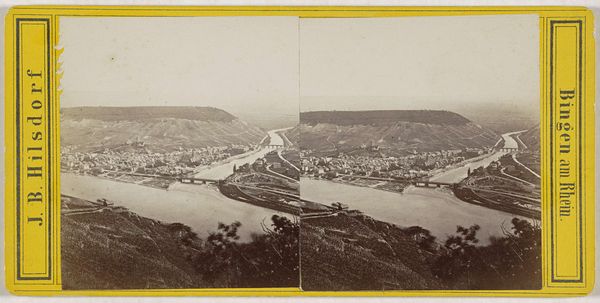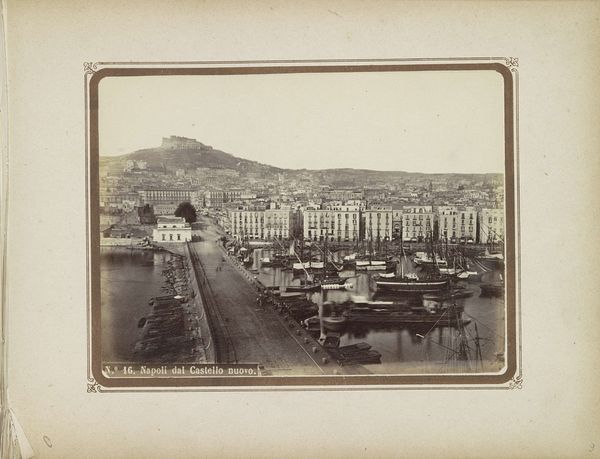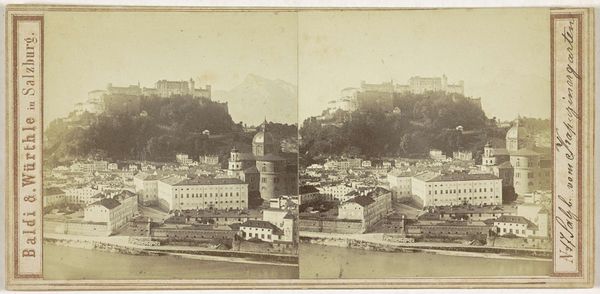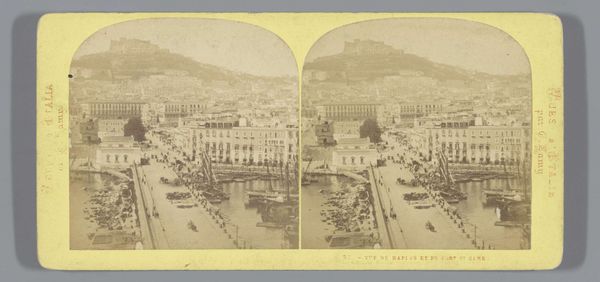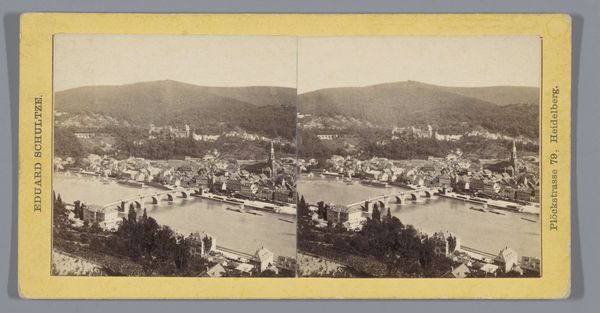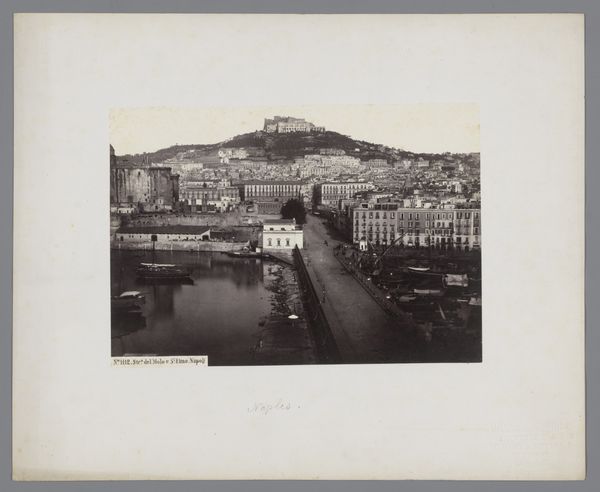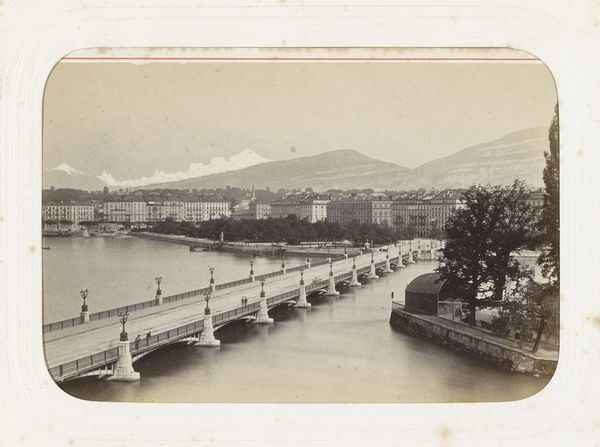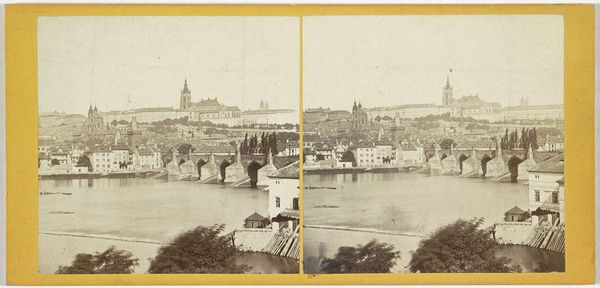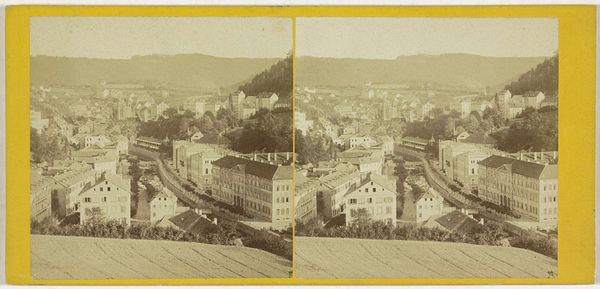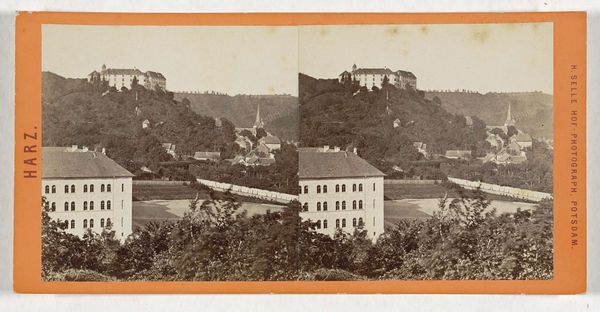
Dimensions: height 89 mm, width 180 mm
Copyright: Rijks Museum: Open Domain
Editor: We're looking at "Gezicht op Bad Ems, Duitsland," a photograph from 1874 by Edmund Risse. It appears to be an albumen print of a cityscape. I’m struck by the tranquility; the light and the composition give a sense of idyllic bourgeois life. What do you see in this piece? Curator: I see more than just tranquility. I see a constructed image steeped in the politics of representation. This "Gezicht," this 'view,' presents a curated version of German identity in the late 19th century. How does this picturesque scene mask the underlying societal tensions present during German unification and the rise of industrial capitalism? The romantic ideal of the landscape often serves as a tool to distract from, and even legitimize, power structures. Who is absent from this photograph, and whose interests does it serve? Editor: That's a different lens than I considered. The absence of figures is certainly noticeable, lending to that sense of serenity, perhaps a false sense of serenity. Curator: Exactly! And what does this focus on bourgeois life signify in the context of class struggles during that era? Who has access to this 'Bad Ems,' this space of leisure and healing? Furthermore, consider the burgeoning photographic industry. This is not just a record; it's a commodity, shaping and reinforcing societal norms through mass consumption. It's romanticism deployed for cultural control. Do you think the framing encourages that perspective? Editor: The high vantage point certainly suggests a degree of control, of surveying the scene. The clarity given by the photographic medium also emphasizes this controlled view, almost sterilizing the setting. This makes me think about the ethics of image-making, then and now. Curator: Precisely. It compels us to constantly question whose narrative is being amplified and at what cost. It is important to understand not only what an image depicts but what social dynamics produced its existence.
Comments
No comments
Be the first to comment and join the conversation on the ultimate creative platform.
